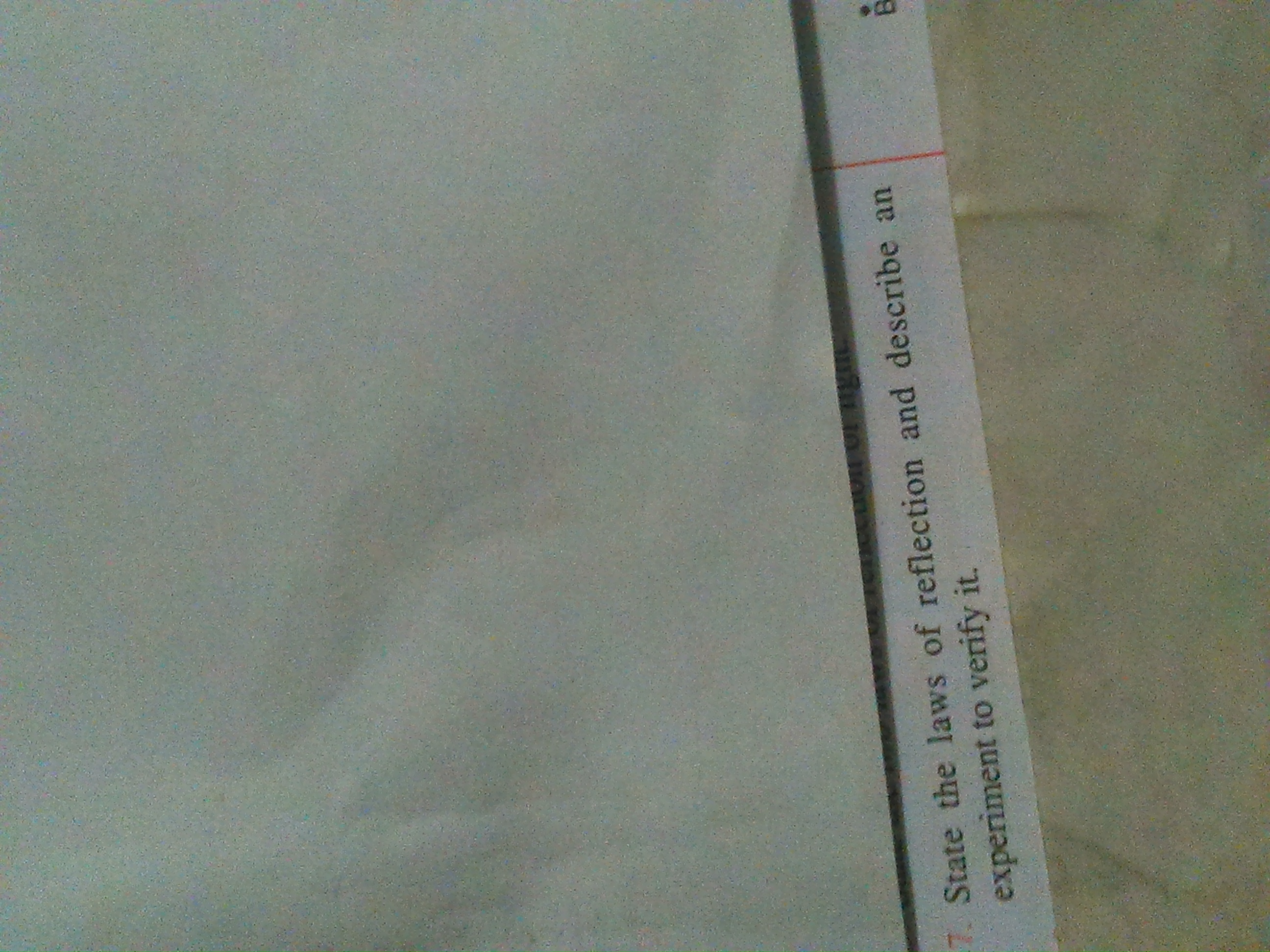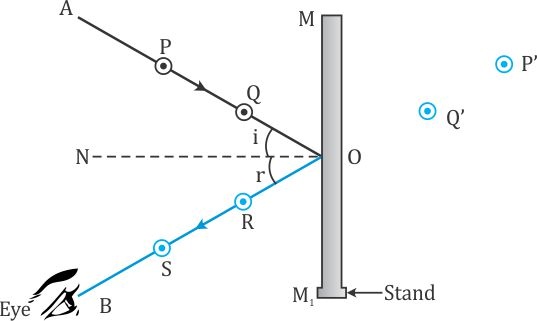ICSE Class 9 Answered

Experiment:
1. A white paper is fixed on a drawing board with line MM′ drawn on it. Draw a point O in the middle and a line OA such that  < 90°. Now, draw normal ON. Then, set a plane mirror along MM′.
< 90°. Now, draw normal ON. Then, set a plane mirror along MM′.
2. Fix two pins P and Q on OA. Now, look from the other side of the normal and see the images P′ and Q′.
3. Fix pins at points R and S in line with the images P′ and Q′ of pins P and Q. Then, draw small circles around the four pins and remove the pins. Draw line OB joining points R and S.
4. The figure below shows the observation of the above arrangement.

5. Measure  and
and  . Record the observations for different directions of incident ray OA.
. Record the observations for different directions of incident ray OA.
6. The experiment is performed on a flat drawing board and the tips of the pins lie on the same plane. Thus, the incident ray, normal ray and reflected ray, all lie on the same plane, verifying the first law of reflection.
7. It will also be observed that the angle of incidence is always equal to the angle of reflection. This verifies the second law of reflection.

